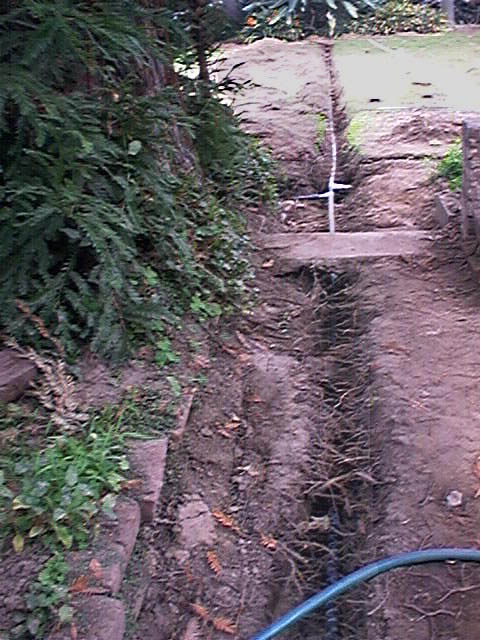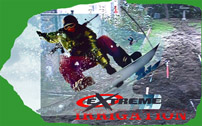


While it is not really possible to capture an overall view of the new system in one photo, the photo above gives some idea of the nature of the new installation. The view is looking south from the valve area, which remains in the same location as the original system, just off the corner where the concrete patio meets the red patio.
The view in the photo shows the new lawn sprinkler system, which will be discussed at length on its own page. Although difficult to see in the photo, the shot reveals the new spectrum of pipe materials. Having had a real-life test with the old systems, in this very back yard, greatly aided materials choices.
As reported on the old system pages, the original 1927-era iron and/or galvanized piping varied considerably in terms of how it was holding up. Nearly all of it was badly deteriorated from corrosion on the outside, and a good bit of it was plugging up on the inside. It did have the advantage of strength, which allowed it to avoid being deformed by the redwood tree roots.
The first renovation (in the late 1970s to early 1980s period) used plastic pipe, mostly Schedule 40 PVC (and bits of brittle, flimsy CL 125!!!). No problems with corrosion or other outside deterioration, and no significant buildup on the inner pipe walls. Still, several pieces which passed close to dense areas of redwood roots were sufficiently deformed to cause concern for their longevity.
Somewhere in the course of events, probably during the first renovation, some copper pipe was used. It appeared to be used especially where nonstandard angle curvy bends needed to be made. While not as decomposed nor as plugged-up on the inside as some of the galvanized pipe, it was nowhere near as old. Further, the same ease of deformation that made it the pipe of choice for the bend also allowed the redwood roots to do some further, undesired bending.
3/4" SCH 40 PVC was an easy choice to make for most of the system, except the parts where the redwood roots are dense. There, it was decided to use the strength of galvanized pipe, and wrap it with pipe wrap tape to (hopefully) dramatically delay decomposition of the pipes’ outsides. The wrapped (black) galvanized pipe can be seen in the foreground of the photo above, switching to (white) PVC after the first ell.